Archimedes of Syracuse
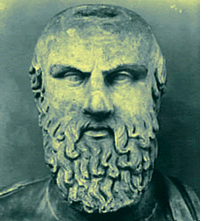 Archimedes was born in the city of Syracuse on the island of Sicily in 287 BC. He was the son of an astronomer and mathematician named Phidias. Aside from that, very little is known about the early life of Archimedes or his family. Some maintain that he belonged to the nobility of Syracuse, and that his family was in some way related to that of Hiero II, King of Syracuse.
Archimedes was born in the city of Syracuse on the island of Sicily in 287 BC. He was the son of an astronomer and mathematician named Phidias. Aside from that, very little is known about the early life of Archimedes or his family. Some maintain that he belonged to the nobility of Syracuse, and that his family was in some way related to that of Hiero II, King of Syracuse.
In the third century BC, Syracuse was a hub of commerce, art and science. As a youth in Syracuse Archimedes developed his natural curiosity and penchant for problem solving. When he had learned as much as he could from his teachers, Archimedes traveled to Egypt in order to study in Alexandria. Founded by Alexander the Great in 331 BC, Alexandria had, by Archimedes' time, earned a reputation for great learning and scholarship.
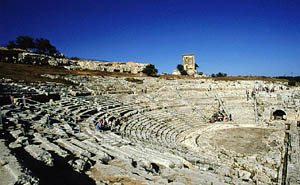 Euclid was one of the most well-known scholars who lived in Alexandria prior to Archimedes' arrival in the city. Euclid was a renowned mathematician, perhaps best remembered for collecting all of the existent Greek geometrical treatises and assembling them in a logical and systematic order in his book, “The Elements.” This compilation was fundamental to the study of geometry for over 2,000 years, and undoubtedly influenced the work of Archimedes.
Euclid was one of the most well-known scholars who lived in Alexandria prior to Archimedes' arrival in the city. Euclid was a renowned mathematician, perhaps best remembered for collecting all of the existent Greek geometrical treatises and assembling them in a logical and systematic order in his book, “The Elements.” This compilation was fundamental to the study of geometry for over 2,000 years, and undoubtedly influenced the work of Archimedes.
After his studies in Alexandria, Archimedes returned to Syracuse and pursued a life of thought and invention. Many apocryphal legends record how Archimedes endeared himself to King Hiero II, discovering solutions to problems that vexed the king.
Archimedes' Screw
 One such story recounts how a perplexed King Hiero was unable to empty rainwater from the hull of one of his ships. The King called upon Archimedes for assistance. Archimedes' solution was to create a machine consisting of a hollow tube containing a spiral that could be turned by a handle at one end. When the lower end of the tube was placed into the hull and the handle turned, water was carried up the tube and out of the boat. The Archimedes Screw is still used as a method of irrigation in developing countries.
One such story recounts how a perplexed King Hiero was unable to empty rainwater from the hull of one of his ships. The King called upon Archimedes for assistance. Archimedes' solution was to create a machine consisting of a hollow tube containing a spiral that could be turned by a handle at one end. When the lower end of the tube was placed into the hull and the handle turned, water was carried up the tube and out of the boat. The Archimedes Screw is still used as a method of irrigation in developing countries.
The Puzzle of King Hiero's Crown
King Hiero had commissioned a new royal crown for which he provided solid gold to the goldsmith. When the crown arrived, King Hiero was suspicious that the goldsmith only used some of the gold, kept the rest for himself and added silver to make the crown the correct weight. Archimedes was asked to determine whether or not the crown was pure gold without harming it in the process. Archimedes was perplexed but found inspiration while taking a bath. He noticed that the full bath overflowed when he lowered himself into it, and suddenly realized that he could measure the crown's volume by the amount of water it displaced. He knew that since he could measure the crown's volume, all he had to do was discover its weight in order to calculate its density and hence its purity. Archimedes was so exuberant about his discovery that he ran down the streets of Syracuse naked shouting, “Eureka!” which meant “I've found it!” in Greek.
Archimedes and the Defense of Syracuse
During Archimedes' lifetime Sicily was a hotspot for both geological and political events. The volcanic Mount Etna loomed threateningly over the island, while on all sides the titanic Punic Wars raged between Rome and Carthage. Situated strategically between the two great powers, Sicily naturally became an object of contention. Self preservation demanded that the kings of Syracuse negotiate with the great powers, and as a result the small city-state often found itself allied with one against the other. Such was the case in 214 BC, when pro-Carthaginian factions within the city chose to side with Carthage against Rome. Shortly thereafter, legions of the Roman army sailed to Syracuse and laid siege to the city walls.
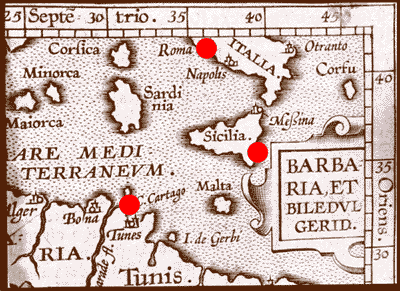
King Hiero II had anticipated such an eventuality. Before his death in 216 BC, Hiero set Archimedes to work, strengthening the walls of Syracuse and modifying its great stronghold, the Euryelos fortress. Archimedes also constructed war machines to defend Syracuse.


When the Romans arrived under the command of the famed general Marcellus, Archimedes was prepared. The Roman historian Polybius relates that Archimedes now made such extensive preparations, both within the city and also to guard against an attack from the sea, that there would be no chance of the defenders being employed in meeting emergencies but that every move of the enemy could be replied to instantly by a counter move.…huge beams were suddenly projected at the [Roman] ships from the walls, which sank some of them with great weights plunging down from on high; others were seized at the prow by iron claws….drawn straight up into the air, and then plunged stern foremost into the depths…. with great destruction of the fighting men on board, who perished in the wrecks….in reality all the rest of the Syracusans were but a body for the designs of Archimedes, and his the one soul moving and managing everything; for all other weapons laid idle, and his alone were then employed by the city both in offense and defense.
The Death of Archimedes
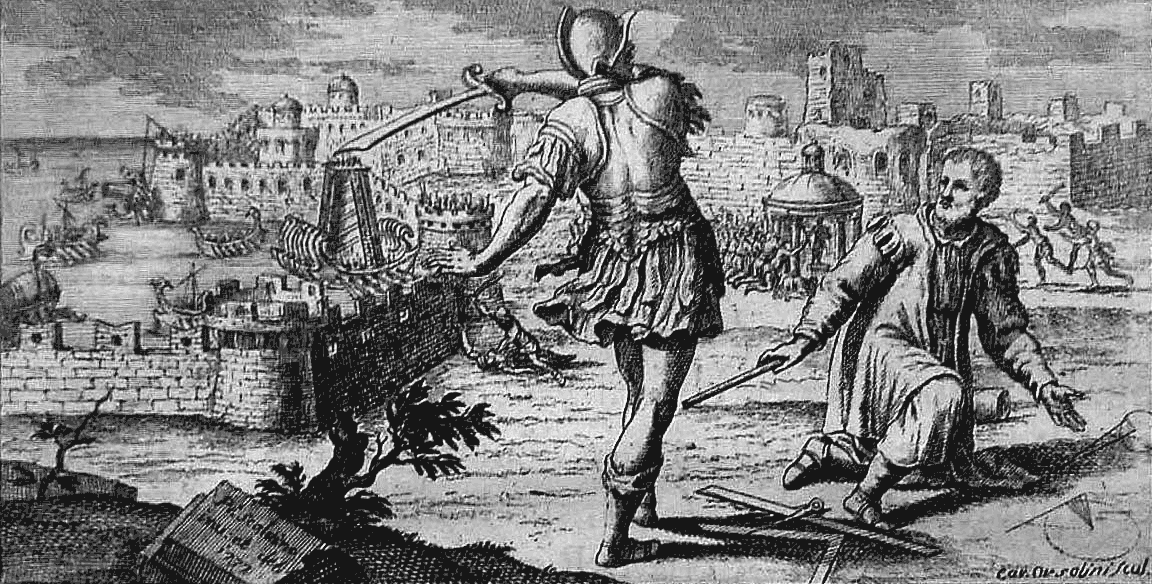
For two years the genius of Archimedes repelled the Romans, enabling the city to survive the lengthy siege. Nevertheless, in 212 BC the forces of Marcellus prevailed and took the city. Marcellus had great respect for Archimedes, and immediately dispatched soldiers to retrieve his foe. Apparently, the great mathematician was unaware that his enemy had stormed the city, so deeply were his attentions focused on a mathematical problem. When a soldier demanded Archimedes accompany him to the quarters of Marcellus he simply refused, and continued his ruminations. The enraged soldier flew upon Archimedes, striking the 75 year-old eccentric dead. Marcellus was greatly distressed upon hearing the news of Archimedes' death, and ordered that he be buried with honors. Archimedes' tombstone was, as he had wished, engraved with an image of a sphere within a cylinder, after one of his geometrical treatises.
Archimedes' Legacy
Despite the many fantastic tales surrounding the life of Archimedes, we are most indebted to him for his mathematical treatises and the contributions he made to the understanding of fundamental physical phenomena. Through the medium of geometry, he was able to elucidate the principles for such basic devices as the pulley, the fulcrum and the lever – devices still utilized today. Archimedes is also credited with the discovery of the principle of buoyancy, or the power of a fluid to exert an upward force on a body placed in it. His further research into volume and density was fundamental to the development of theories of hydrostatics-the branch of physics dealing with liquids at rest.
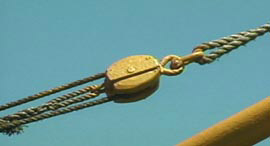

The story of the survival of Archimedes' treatises down to our own time is intricate and complicated, and has been traced in extraordinary detail. But an essential point is this: it is through three manuscripts that we know the texts of Archimedes treatises in Greek. One was last heard of in 1311, a second was last heard of in the 1550s, and the third is The Archimedes Palimpsest, now at The Walters Art Museum in Baltimore, and the subject of this website. Because this is just the start of a fascinating story.